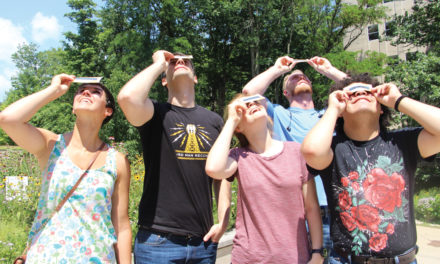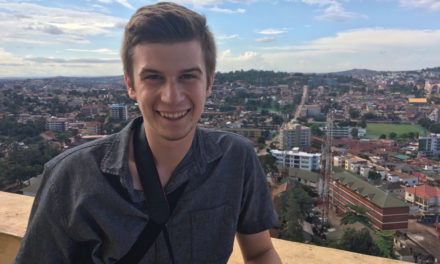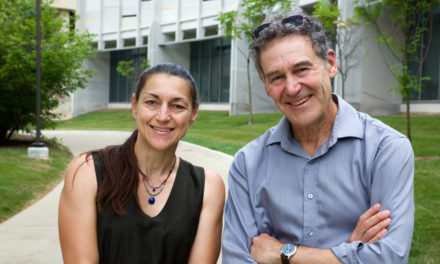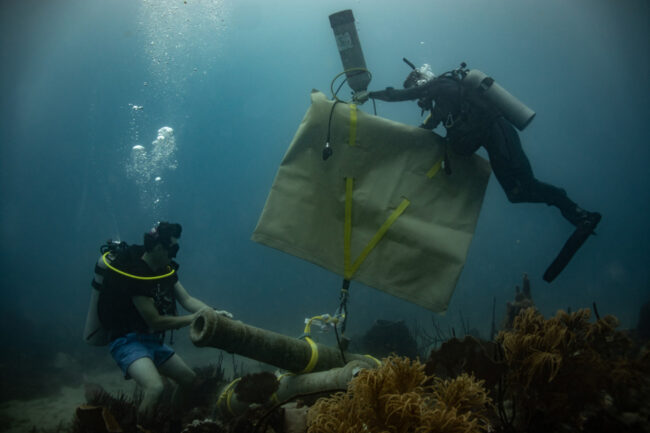
by PETER DORFMAN
How does a shipwreck become an underwater museum? By becoming a site for “in situ preservation” of the wreck, its artifacts, and the living ecosystem that has grown around it, says Charles Beeker, director of the Center for Underwater Science at the Indiana University School of Public Health.
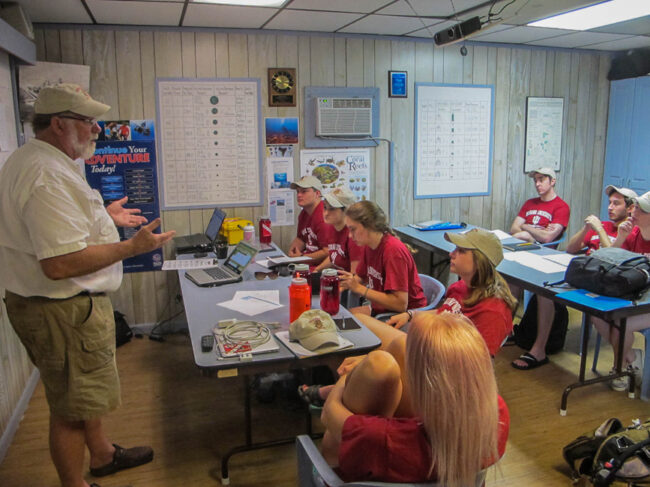
“We provide an alternative to treasure hunting,” Beeker says. “These are underwater cultural heritage sites.”
Funded by a U.S. Department of State grant, and working with the government of the Dominican Republic, Beeker and his team have created five underwater museums in the waters off that country’s coast. The Living Museums in the Sea are open to those prepared to visit by snorkeling or scuba diving. After diving in, visitors will find a commemorative plaque attached to a pedestal of Indiana limestone, as well as interpretive markers.
They also will find a mooring buoy at the site for their boats. “Every museum has to provide parking,” Beeker adds.
One high-profile site, created in 2007, preserves a vessel identified as the Quedagh Merchant, an Armenian-owned ship seized by the pirate Captain William Kidd in the 1600s. The newest Living Museum in the Sea, opened in 2019, is the resting place of the 1725 Spanish wreck Nuestra Señora de Begoña.
Beeker took his first dive in 1963, at the age of 10. He was still a novice when he encountered undersea explorer Philip Diole’s resonant quote: “The sea is an underwater museum still awaiting its visitors.” He held that thought until the 1980s when he was working on a “shipwreck park” in the Florida Keys.
“We coined the term ‘living museum’ for that project. We were preserving both the biology and the archaeological relics of the Spanish galleon San Pedro,” Beeker says.
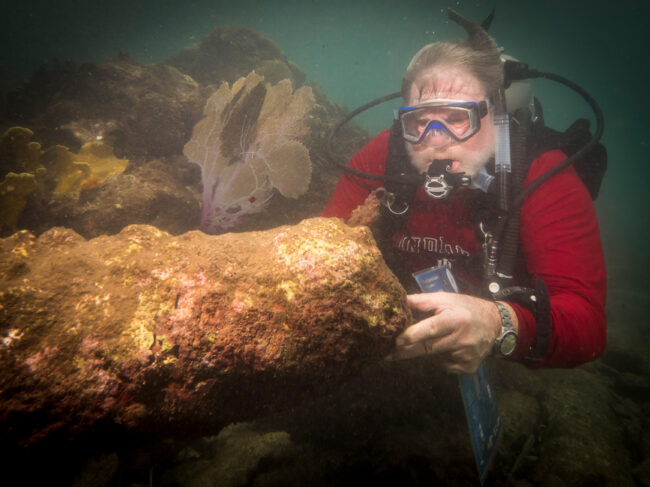
The Dominican government protects the sites from treasure hunting or tampering. Large objects like cannons are left on site, and in fact are best preserved underwater. Small, valuable artifacts are removed; after study, many have been sent for exhibition to the Museo de las Atarazanas Reales, the Dominican Republic’s national maritime museum.
“You can’t just leave piles of silver and emeralds in eight feet of crystal-clear water, 50 feet offshore,” Beeker says.
There may be more underwater museums in IU’s future; Beeker’s team has been in touch with other governments in the region. “Mexico now wants to adopt the model,” Beeker says.
For more information, visit magbloom.com/underwatermuseums.


